
Jörg Schröder was a German writer and publisher.
He founded countercultural publishing house März Verlag in 1969 and published books such as Sexfront (1970), instrumental to the sexual revolution in Germany.


Jörg Schröder was a German writer and publisher.
He founded countercultural publishing house März Verlag in 1969 and published books such as Sexfront (1970), instrumental to the sexual revolution in Germany.
Isabel Sarli was an Argentinian model and actress known for her risqué films. As such, she was the Latin American Brigitte Bardot. The first film to show her nude was Thunder Among the Leaves (1957) which has her skinny-dipping from 50:09 to 51:38. There are also nude indigenous females (26:34 and subsequent scenes).
Thunder Among the Leaves (1958)
If you are more into the wackier films like I am, there is Carne (1968) with Isabel Sarli as Delicia, a worker in a meat-packing factory; Fuego (1969) with Sarli as a nymphomaniac; and Fiebre (1970) in which Sarli falls in love with a horse when she sees a stallion mounting a mare.
Carne (1968)
Fuego (1969)
Fiebre (1970)
Searching for “Isabel Sarli”, “sexploitation” and “Latsploitation” brings up snippets such as “generally boring sexploitation film about one of those favorite characters in male reveries, a nymphomaniac.” ([on Fuego] in Cue – Volume 40, Issues 1-13 – Page 67 (1971)); “Isabel Sarli breasting her way through further south-of-the-border sexploitation affairs. […] There’s never been a nudie movie queen more amply endowed than Argentina’s Isabel Sarli who simply has to shed her clothing to make things like story and characterization seem irrelevant.” (Film Bulletin – Volume 39 (1970)); “Woman and Temptation is zero as art, but the talents of the buxom Isabel Sarli make this a top sexploiter entry.” (Filmfacts – Volume 12 (1969)) and “While we cannot claim that Sarli’s films would adhere to a feminist agenda …” (Latsploitation, Exploitation Cinemas, and Latin America (2009)).
Doris Day was an American actress and singer, a vivacious blonde with a wholesome image, she was one of the most prolific actresses of the 1950s and 1960s.
Dubbed the “eternal virgin”, she thrived in “no sex sex comedies” full of double entendres and sexual innuendo in the final days of the Hays Code-era but her popularity waned with the arrival the more explicit films of the sexual revolution.
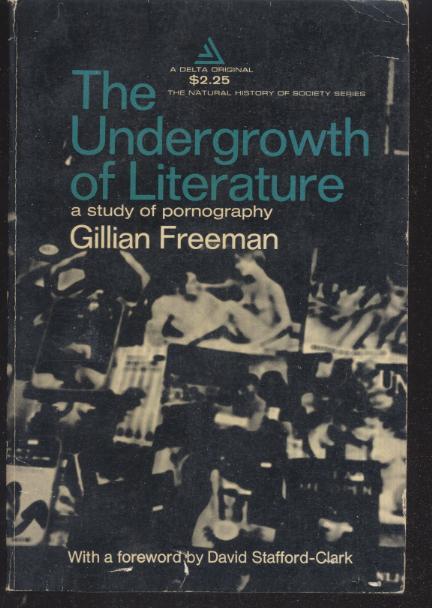
Gillian Freeman was a British writer best known for her book The Undergrowth of Literature (1967), a pioneering study of pornography.
At first I thought I’d not pay her death any attention, since I do not own a copy of The Undergrowth of Literature, the reason I discovered Mrs. Freeman in the first place. But I changed my mind when I found out that the Hendrik Conscience Heritage Library had a copy of this book in its warehouses, so off I was.
Leafing through the book (200 pp.) one finds references to other studies of porn from that era but most of all one is struck by the female point of view. Mrs Freeman is one of the first porn researchers to put forward that female sexual fantasies can be found in women’s magazines:
“I have merely made a survey of current fantasy literature which overtly or covertly, supplies the stimulus which so many people need, from the romance of Woman’s Own to the sado-masochism of Man’s Story” — p. 1
As always the negative criticism is most amusing:
“[the book is] nothing more than a collection of quotes, précis, paraphrases and photographs from current pornographic publications and glossy magazines … there is no love like the liberal prig‘s love for perverts and perversions”. –Stephen Vizinczey,The Times, 4 November 1967
Since Undergrowth is not in Google Books, I thought I’d give you the index. This may be useful to the aspiring pornosopher although apart from its focus on herstory it does not come near the qualities of Sex in History (1954) and Eros Denied (1964).
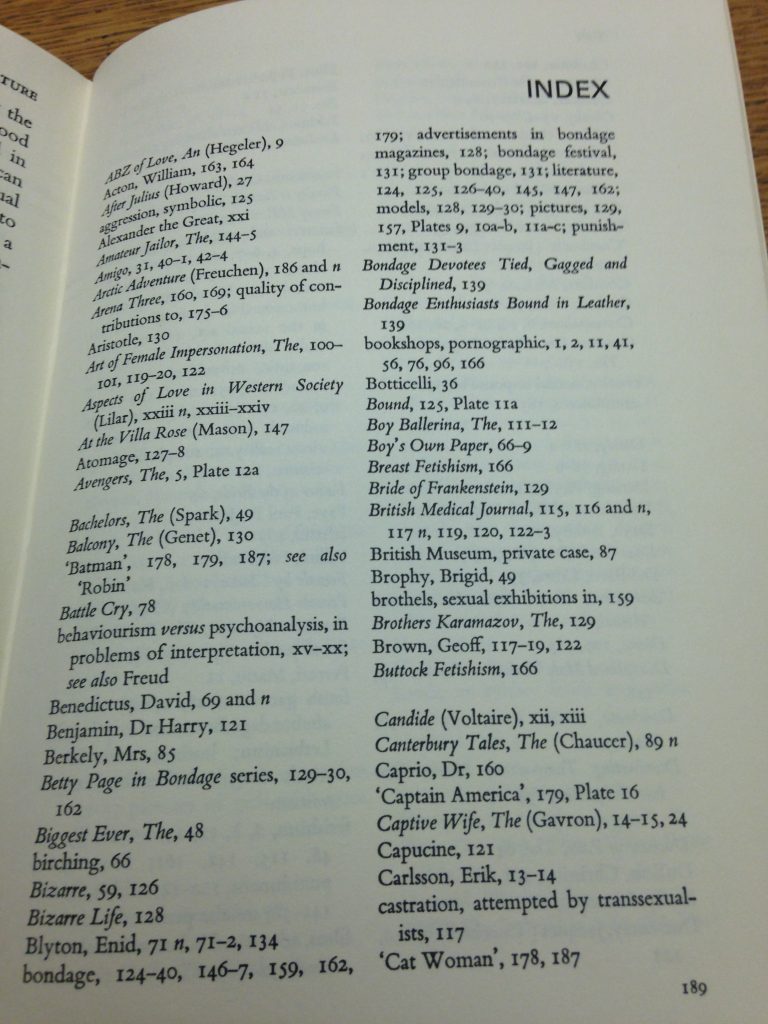
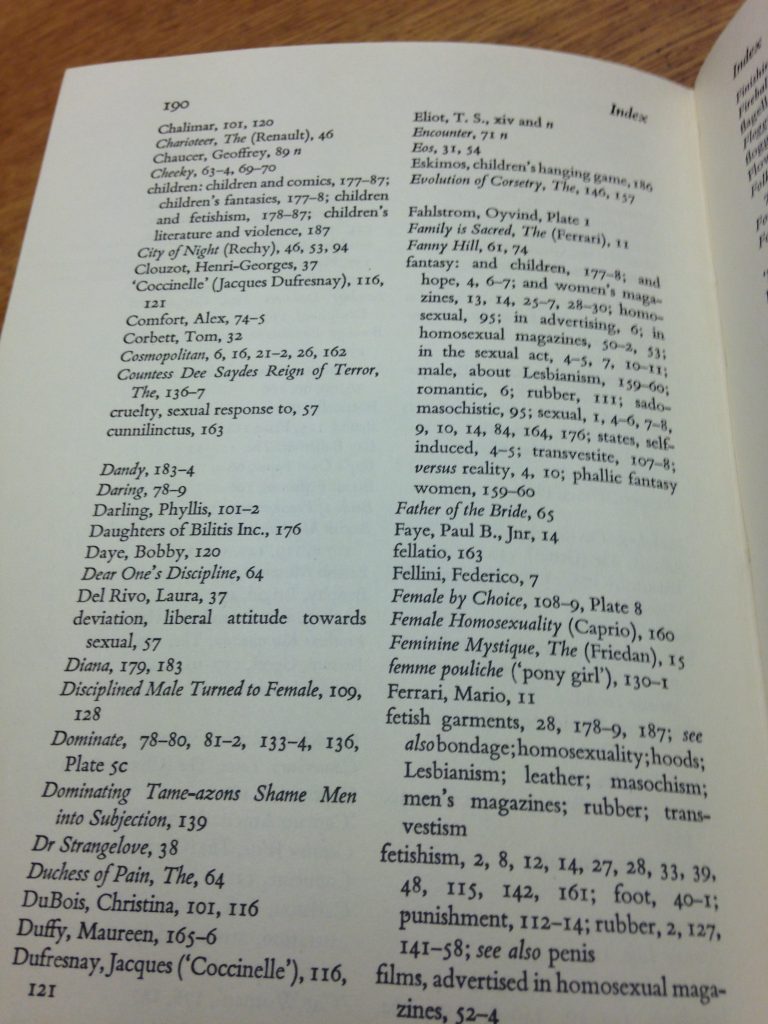
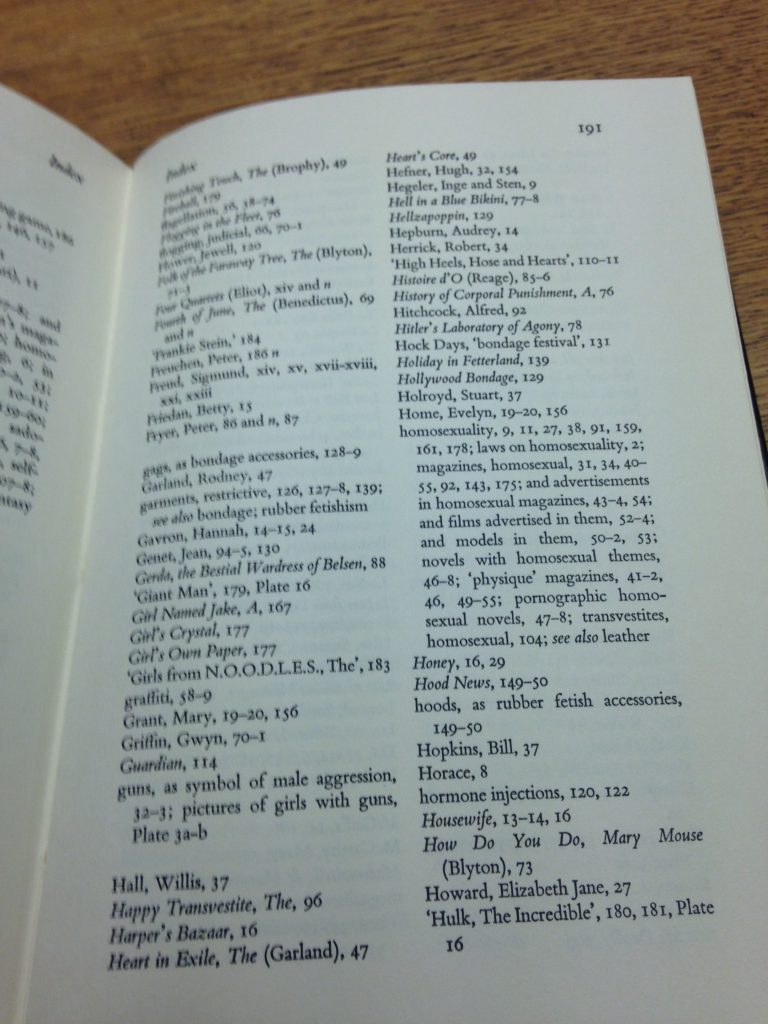
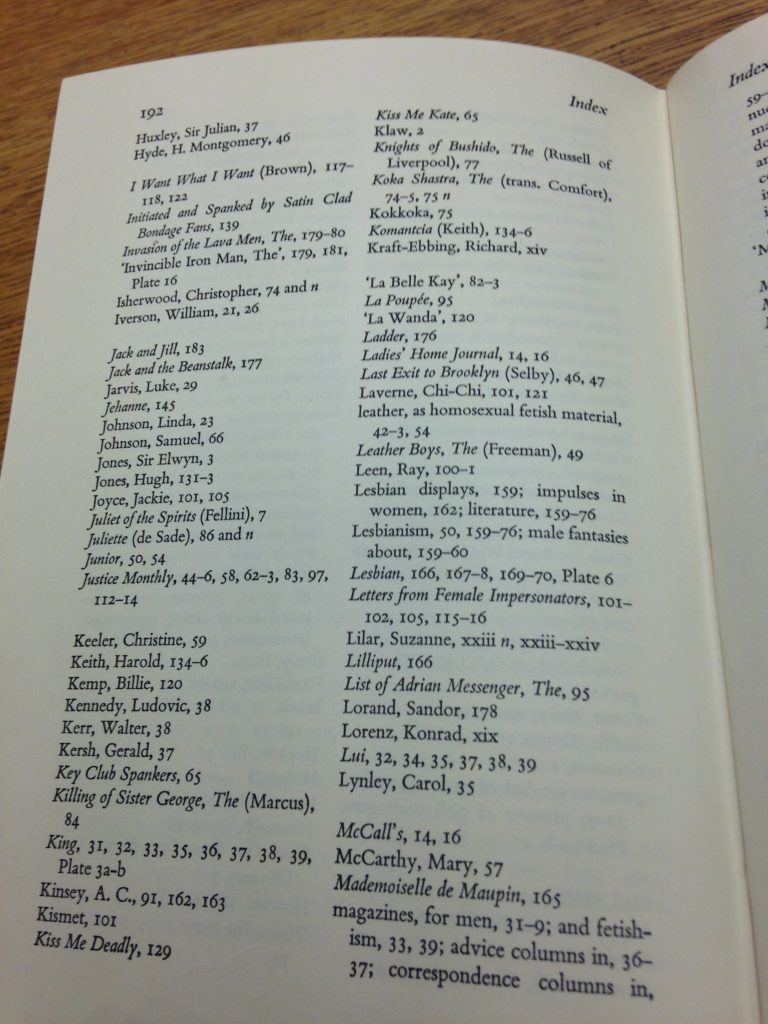
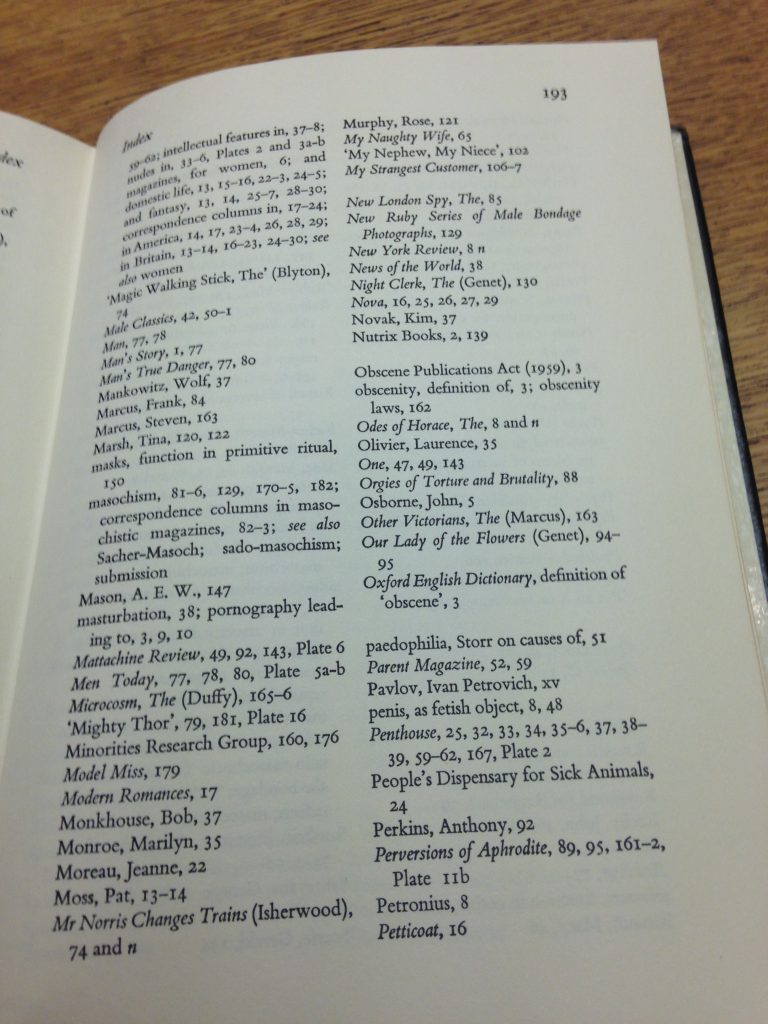
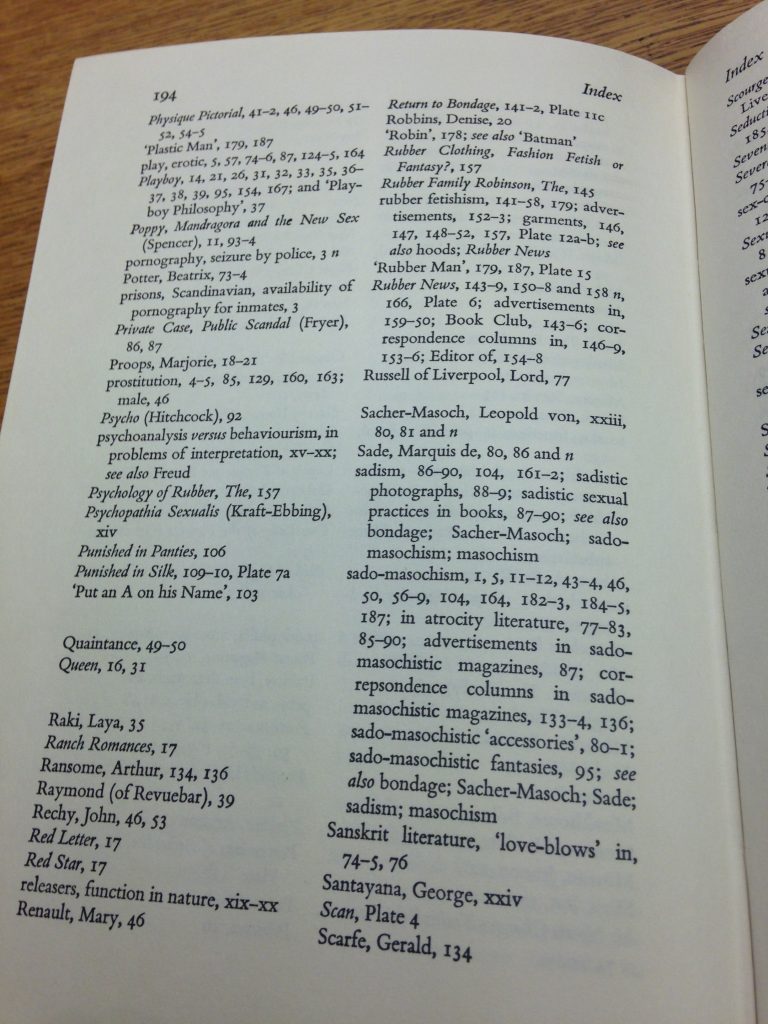
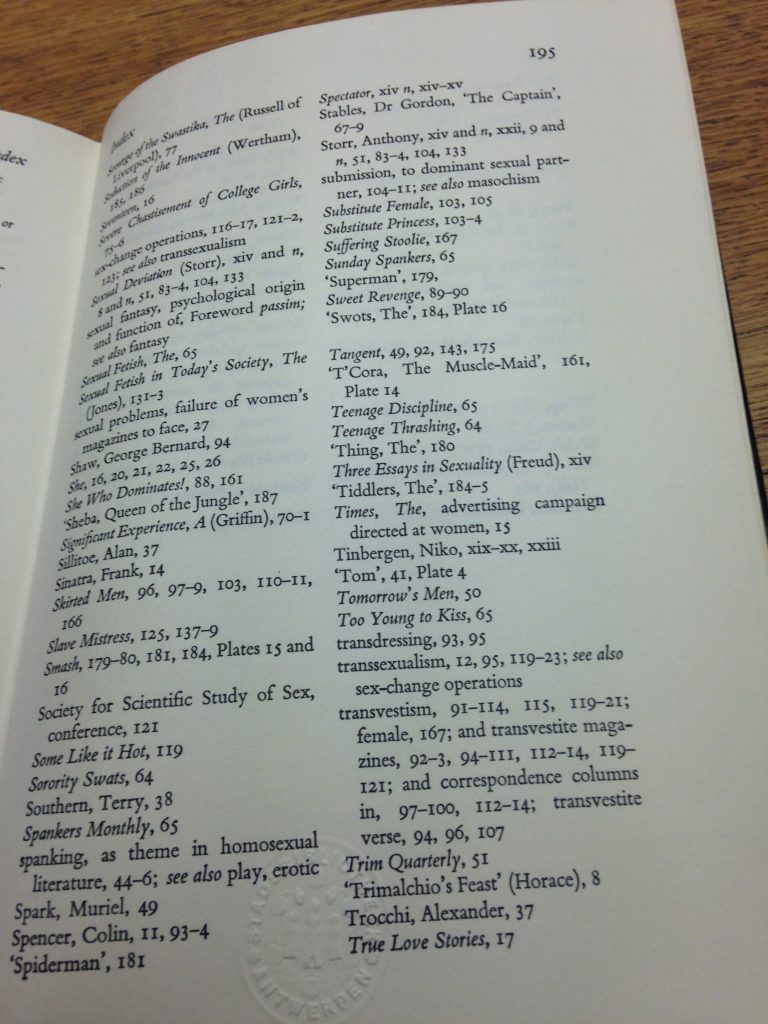
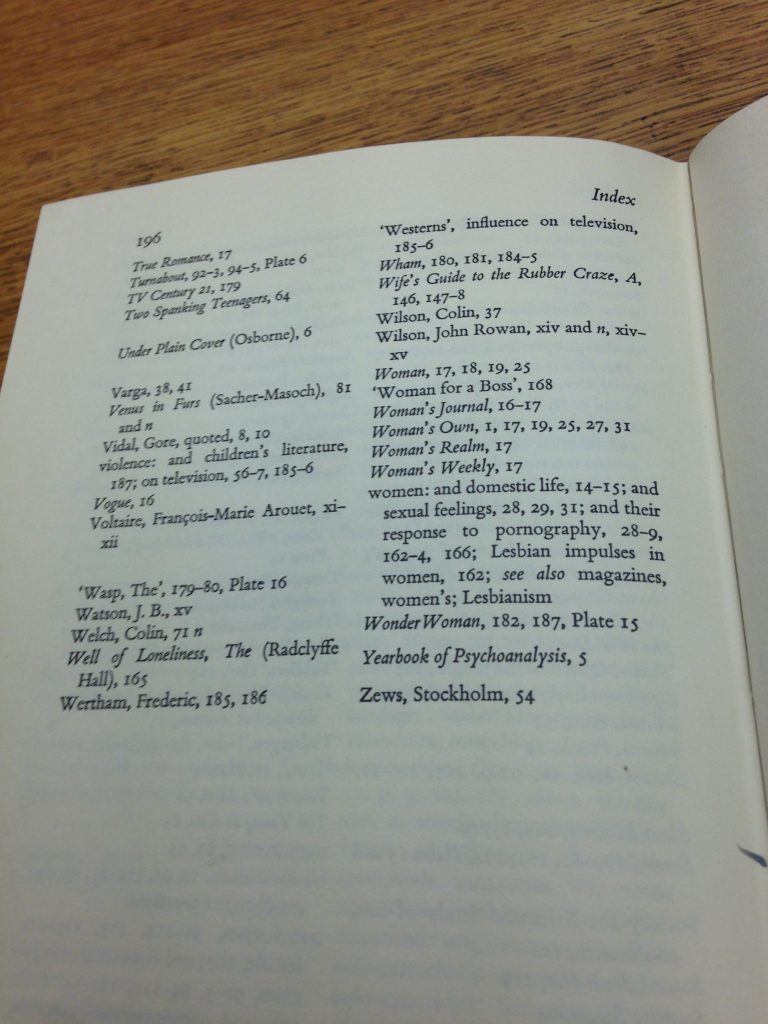
Gillian Freeman also wrote the thought sequences dialogue for The Girl on a Motorcycle (1968).
I wonder who is inheriting Mrs. Freeman’s library.
Some people don’t make the news when they die. Among them this gentleman.
William Hamling was an American publisher of pulp and erotica, in a time when publishing books could still be dangerous (it has not been dangerous for the last fifty years of so, at least in the west). His financial backing for the case Redrup v. New York against Robert Redrup, a book seller who sold Hamling’s risqué paperbacks was instrumental in abolishing obscenity censorship in the United States.
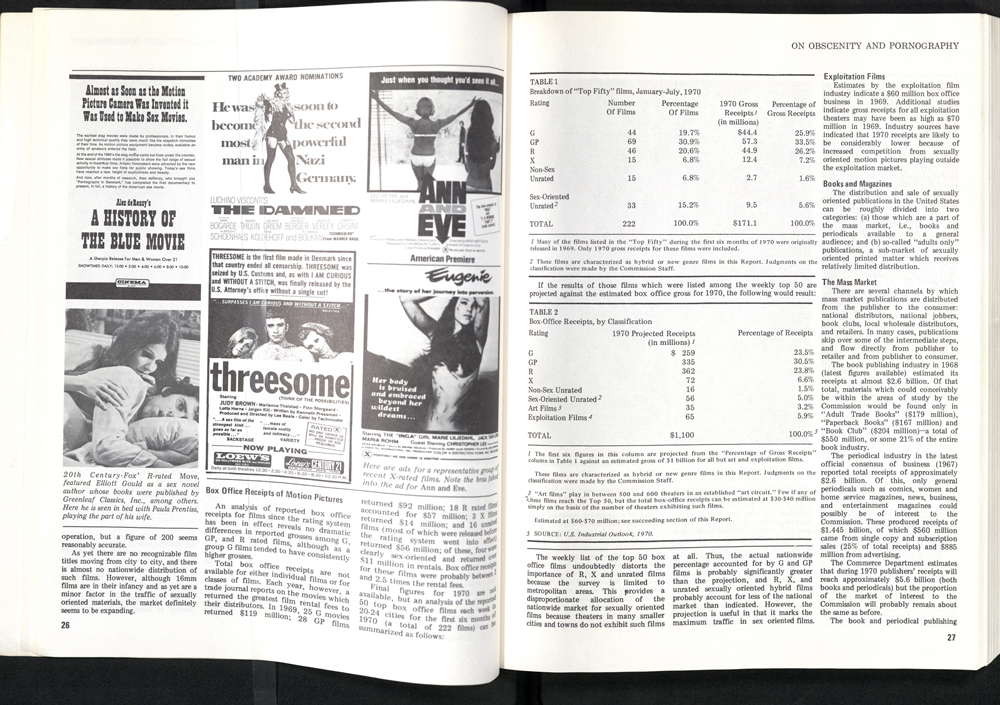
Most amusingly Hamling published an illustrated edition of the President’s Commission on Obscenity and Pornography in 1970 [sample page, above].
Both its editor Earl Kemp and Hamling himself were sentenced to one year in prison for “conspiracy to mail obscene material,” but both served only the federal minimum of three months and one day. Incredible if you come to think of it (and strange also, considering that the Redrup case supposedly abolished obscenity censorship).
I would have thought a complete version of this grand example of détournement to have been available by now, disappointingly so, this is not the case.
Steven Marcus is best-known for The Other Victorians (1964) [below], a study of Victorian pornography in which he coined the term pornotopia.
The book is a classic in the academic study of pornography.
I’ve never been able to find out the identity of the author of the illustration on the cover. It’s in the skinny style of Raphael Kirchner (1867– 1917) and Léo Fontan (1884 – 1965) which was popular in the late 19th and early 20th centuries. That’s all I know. Anyone?
I can’t remember exactly how but I managed to stumble on a complete version of the German short film Besonders wertvoll.
On Youtube, of all places:
Besonders wertvoll (1968, English: Of Special Merit) is a short subject directed by Hellmuth Costard and produced by Petra Nettelbeck.
The film, now almost fifty years old, criticized the new German Film Funding Act of 1967 by way of a talking phallus representing German politician Hans Toussaint, co-sponsor of the new film funding law. The title Besonders wertvoll translates as ‘of particular merit’ (as in cultural significance vs. ‘utterly without redeeming social importance‘) and is an allusion to the highest film rating given by Deutsche Film- und Medienbewertung.
Love misquotations? Here’s a good one. This film is famous for originating “Only the perverse fantasy can still save us,” (misattributed to Goethe), which is shown at the end of the film credits.
For those of you interested in weird films, here[2] is a Youtube playlist of films featured in Amos Vogel’s Film as a Subversive Art (1974)
The film is a milestone in the history of the sexual revolution in Germany.
https://www.youtube.com/watch?v=C7EFyYXcylM
RIP José Ramón Larraz (1929 – 2013).
After the death of Jesús Franco earlier this year, fellow countryman Larraz was the last survivor of “sexual revolution“-era European exploitation cinema.
Now the two last two last survivors of that sensibility are Radley Metzger (born 1929) and Roger Corman (born 1926).
My first exposure to Larraz was the VHS cover of La visita del vicio (The Coming of Sin). For the infamous Pasiphae scene from La visita del vicio shot scroll to 15′:32”.
Video: Eurotika! Larraz episode (1992).
I’ve previously mentioned Larraz here: https://blog.jahsonic.com/daedalus-devised-a-hollow-wooden-cow/
I’ve always had a soft spot for the Austrian psychoanalyst Wilhelm Reich (1897 – 1957) and while researching Freudo-Marxism I investigated him in some greater depth and stumbled upon the acronym Sexpol.
Sexpol is short for Sexualpolitik, German for sexual politics.
And then there is the “Poster de soutien a Sexpol“[1], a promotional poster for the French journal Sexpol (1975-80, an index of all the issues + covers here). It depicts a male baby, touching and looking at his penis.
The right hand side bottom of the poster indicates that the photo comes courtesy Instituto W.R. – Mexico, this is as far as I’ve been able to trace the origin of the photo.
There is a Spanish version[2] of the poster which features the “Manifiesto Sexpol” (1936).
The caption at the bottom left reads:
Wilhelm Reich is credited with joining Freud and Marx, creating what is now known as Freudo-Marxism. In his book The Mass Psychology of Fascism (1933), Reich argues that sexual repression leads to fascism. It is the origin of the “make love, not war” credo. Marcuse’s Eros and Civilization (1955) built upon Reich and so did Gershon Legman’s magazine Neurotica. Society is mentally ill, say all these tracts, society needs to see a sociatrist.
The funny thing is, they all got it wrong. “The pill” brought short-lived sexual revolution and a new golden dawn for the alpha male, but did not end wars. It only brought on AIDS. How cruel.
See the end of the sexual revolution, about which I have written previously.
Over at my Tumblr page, I’ve posted two covers[2][3] of Reich’s books.